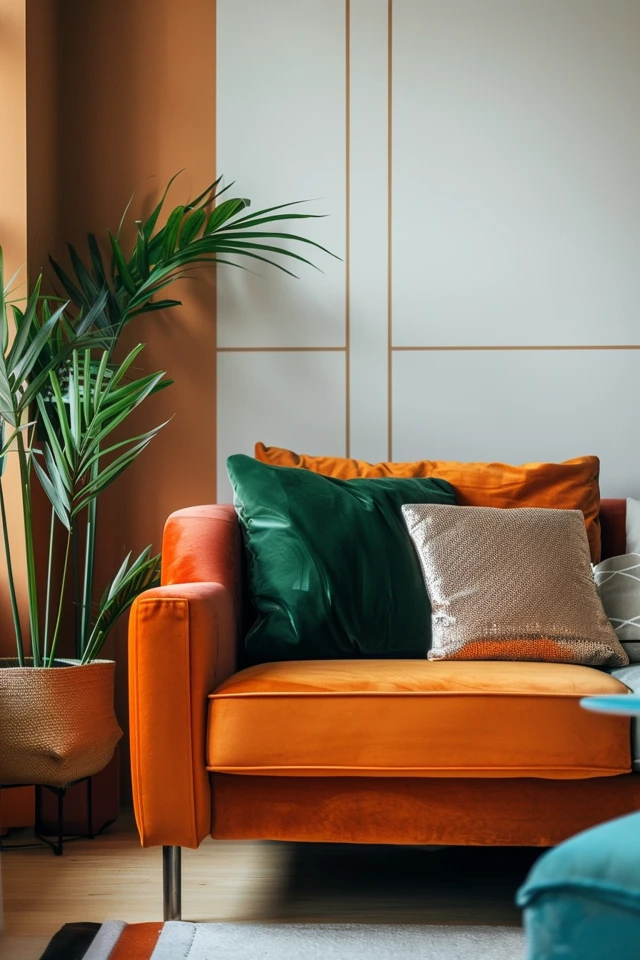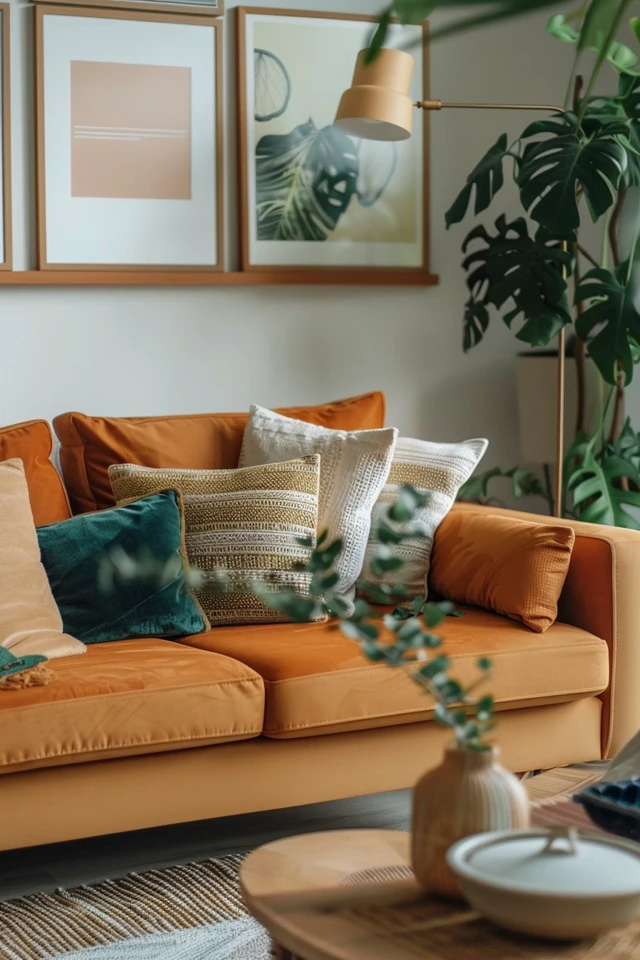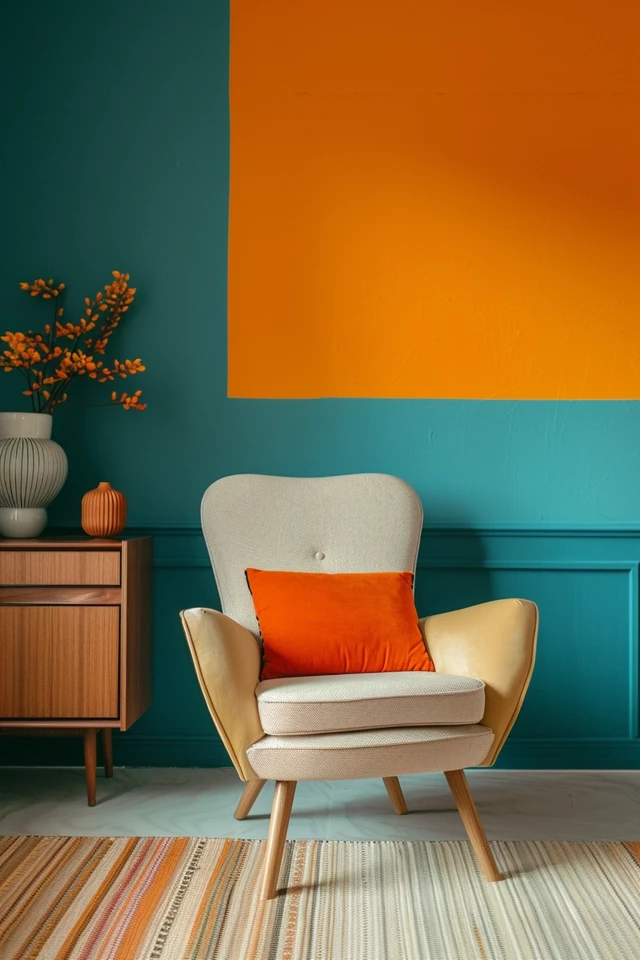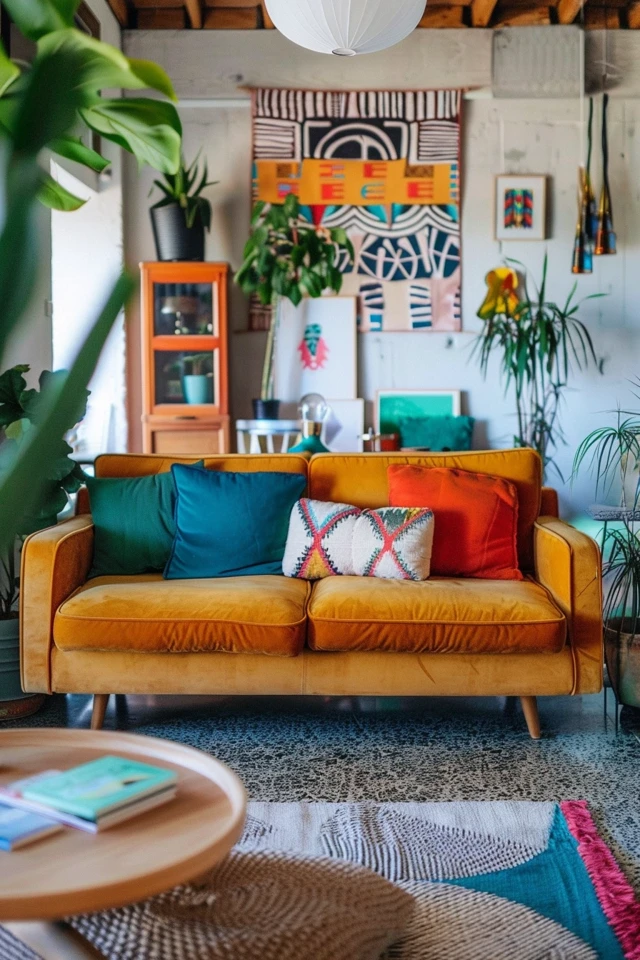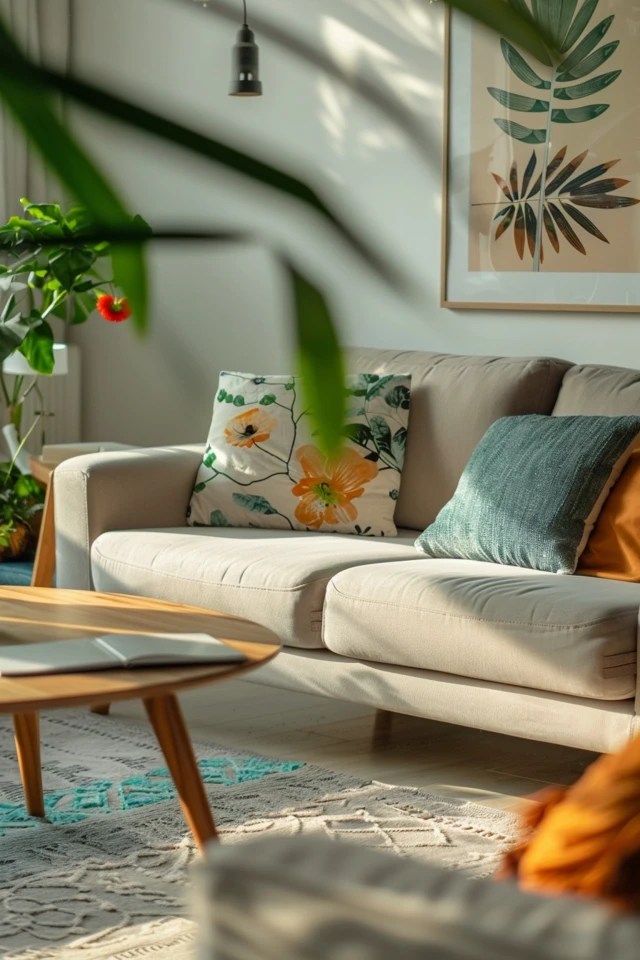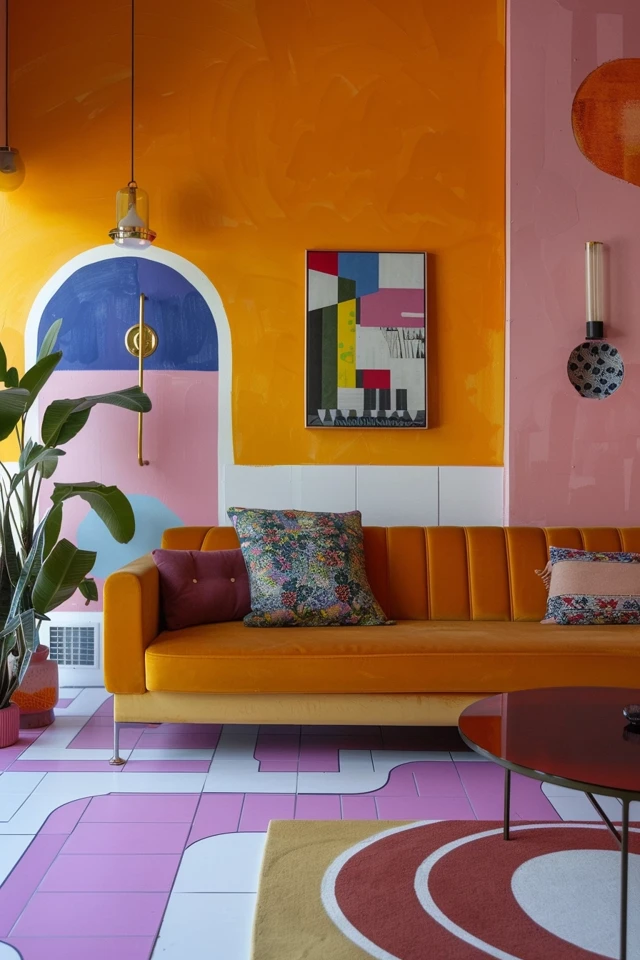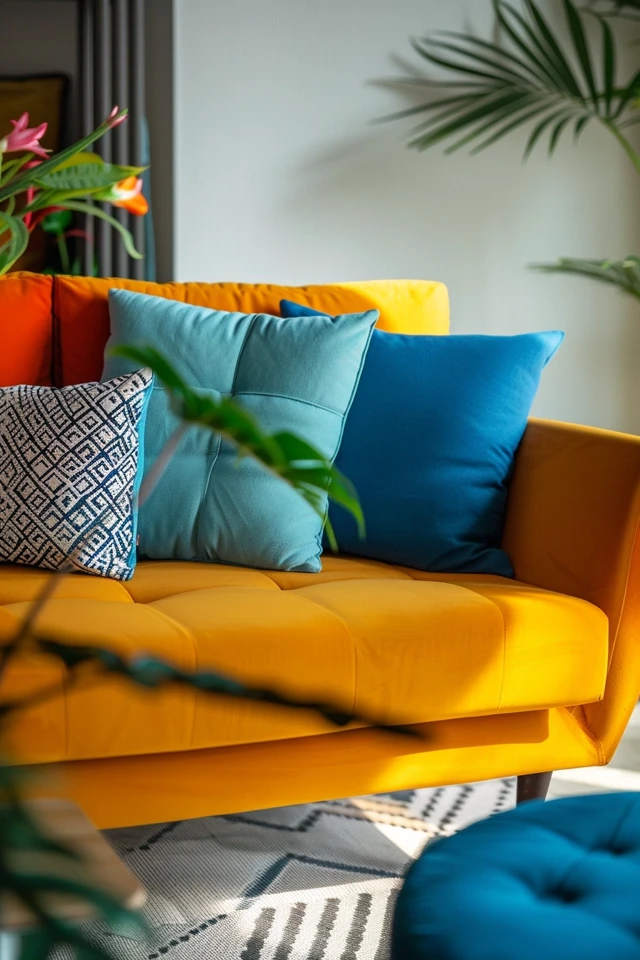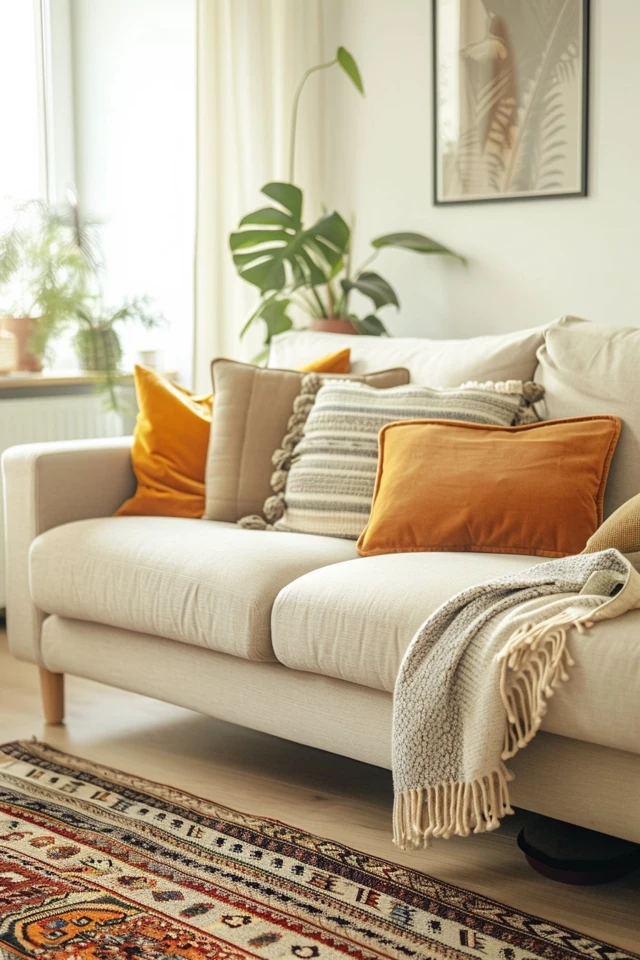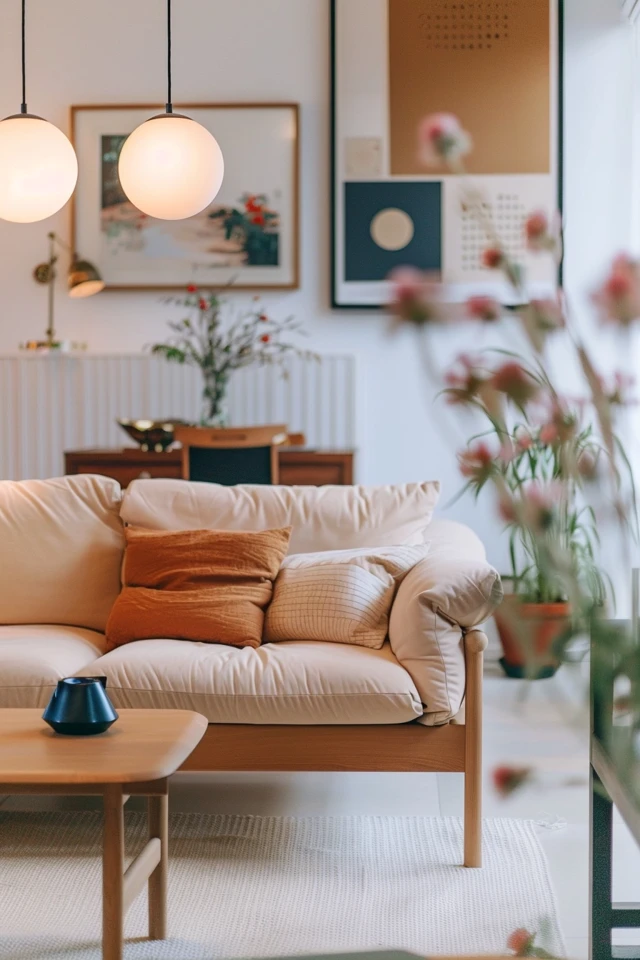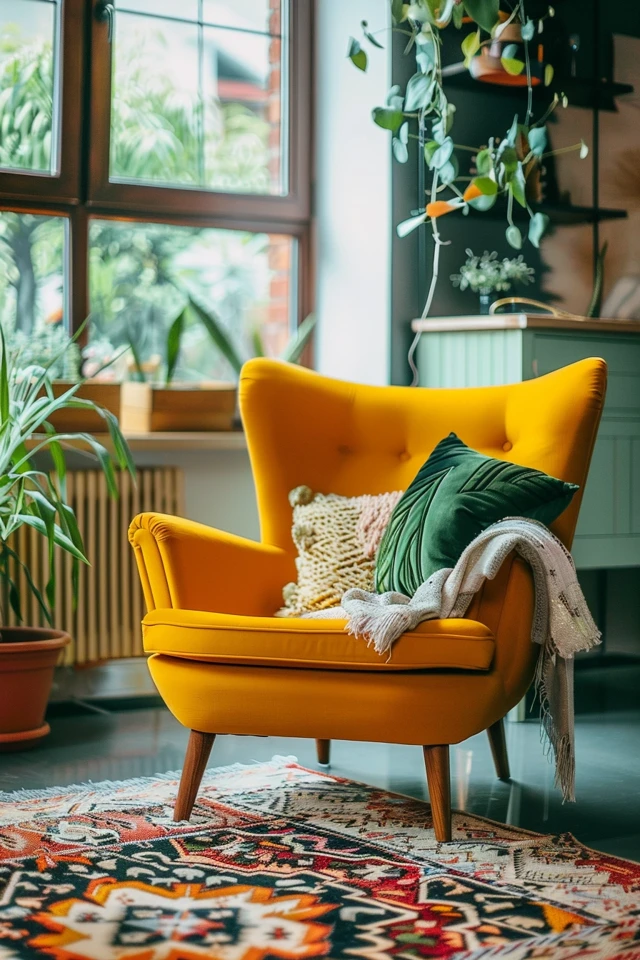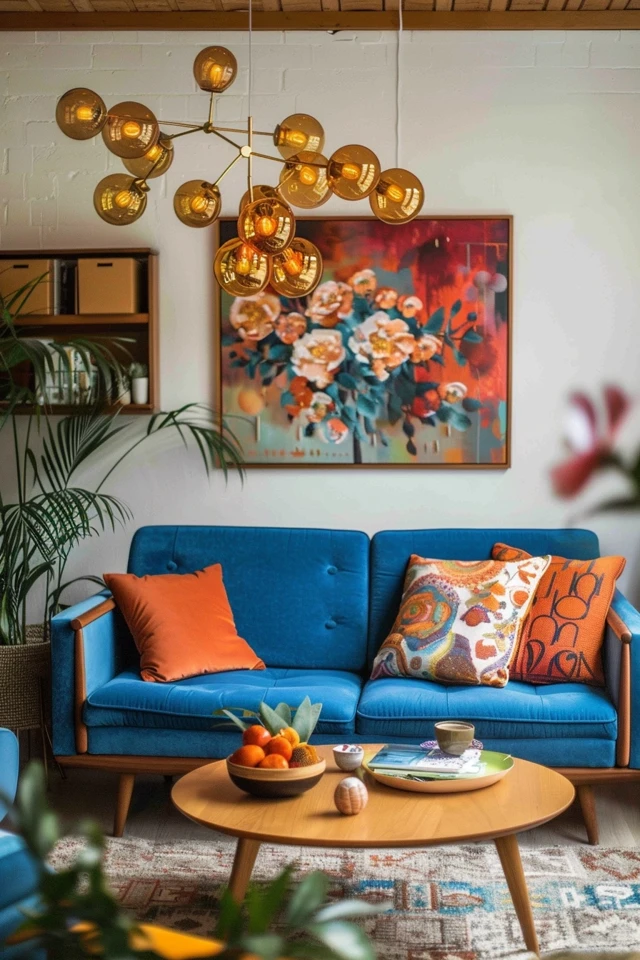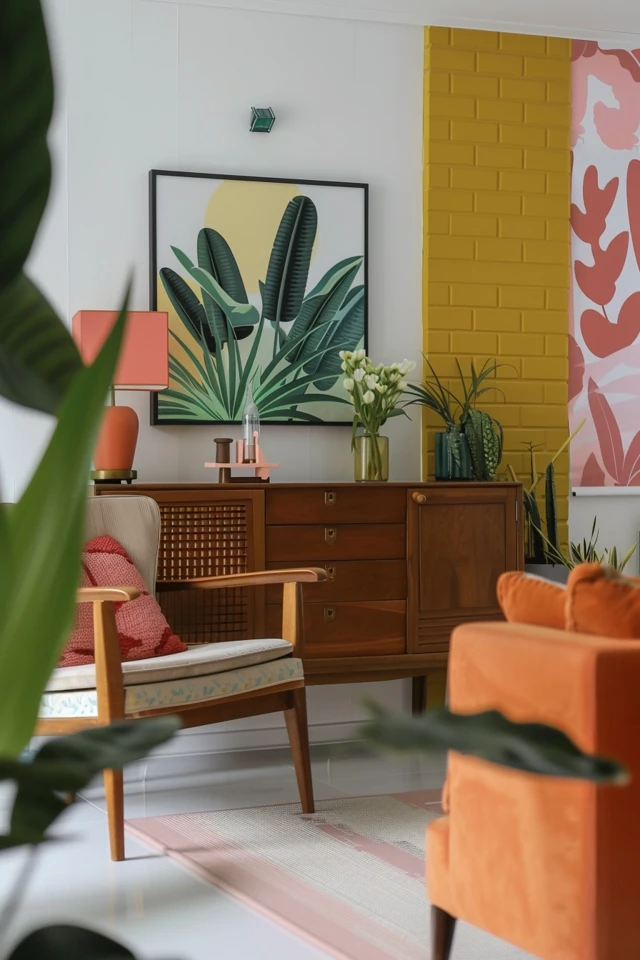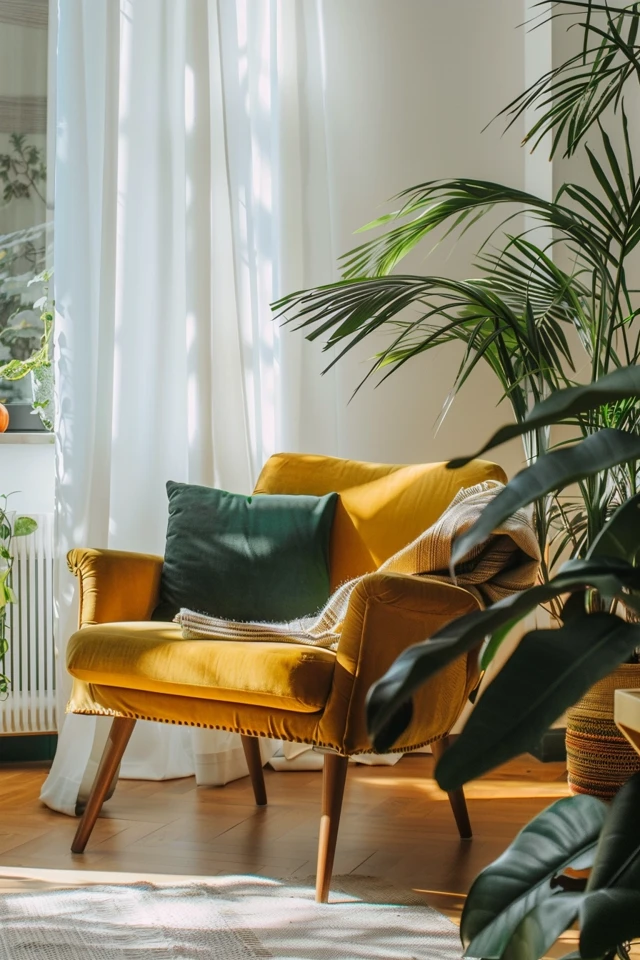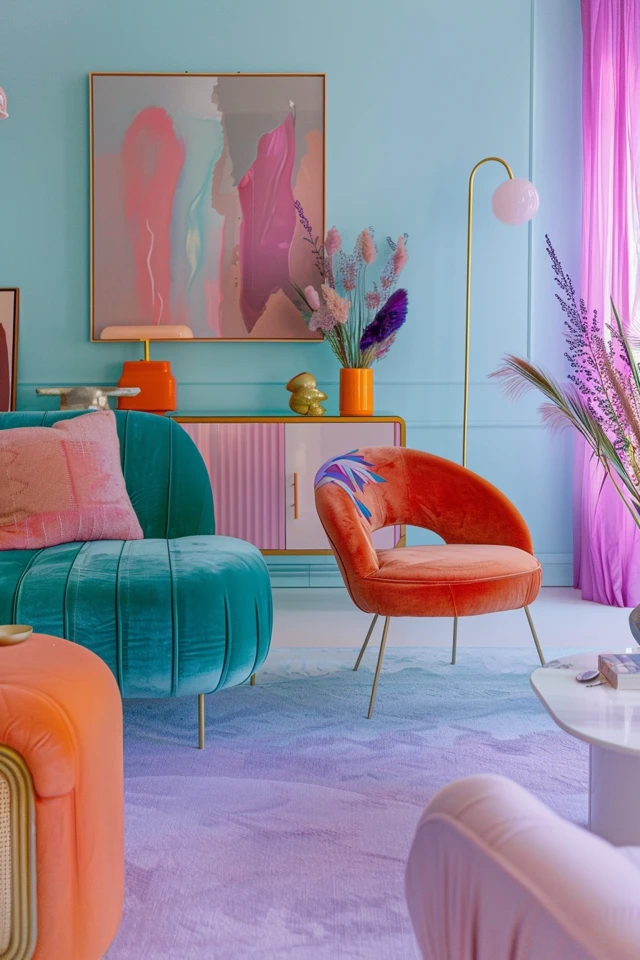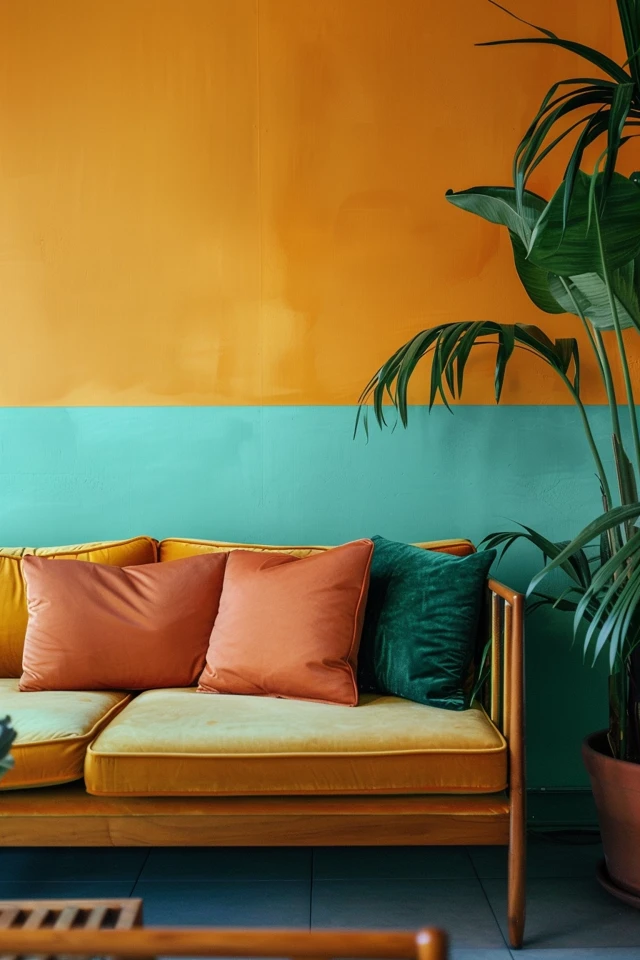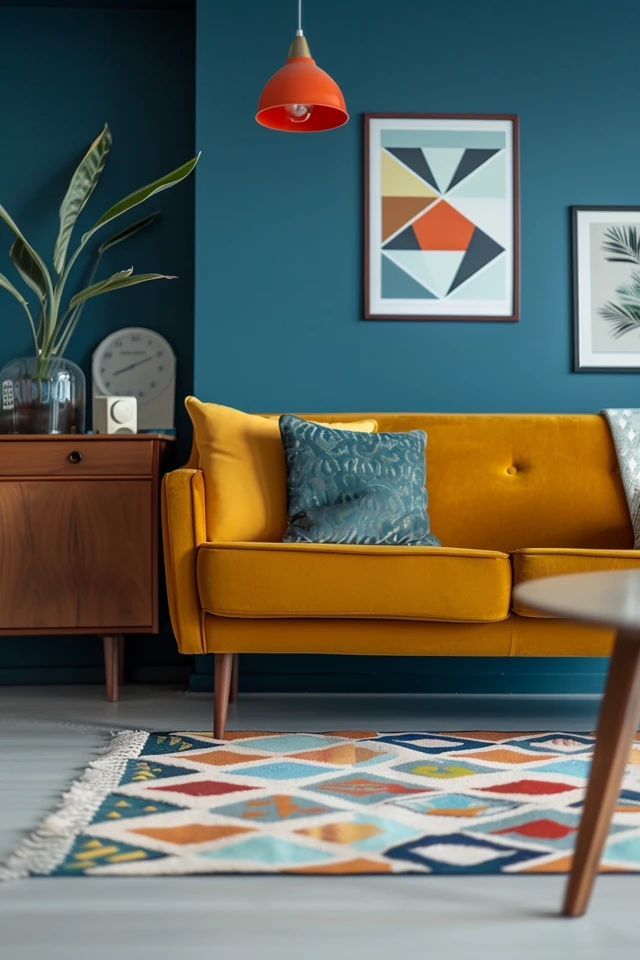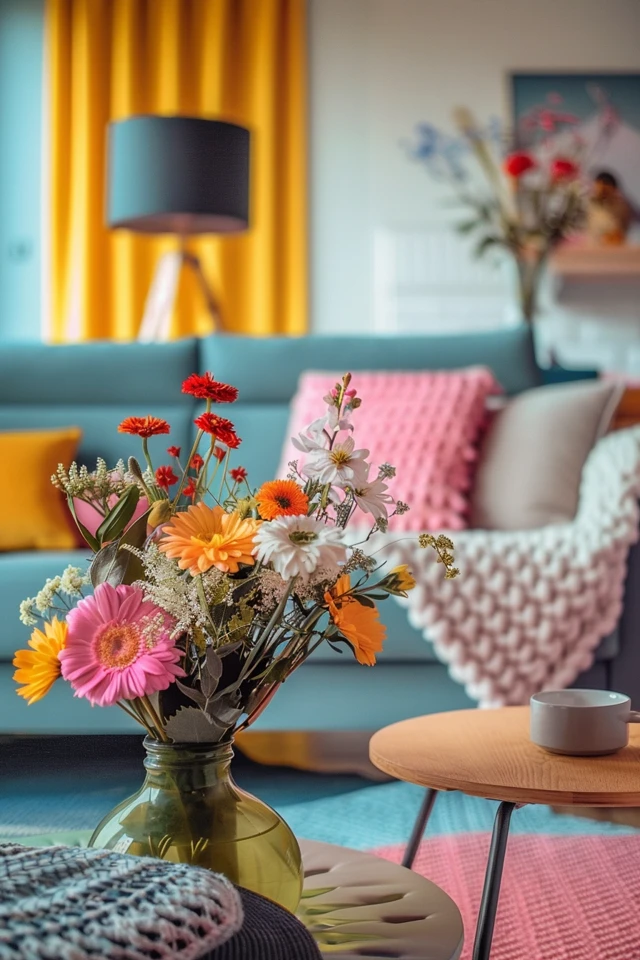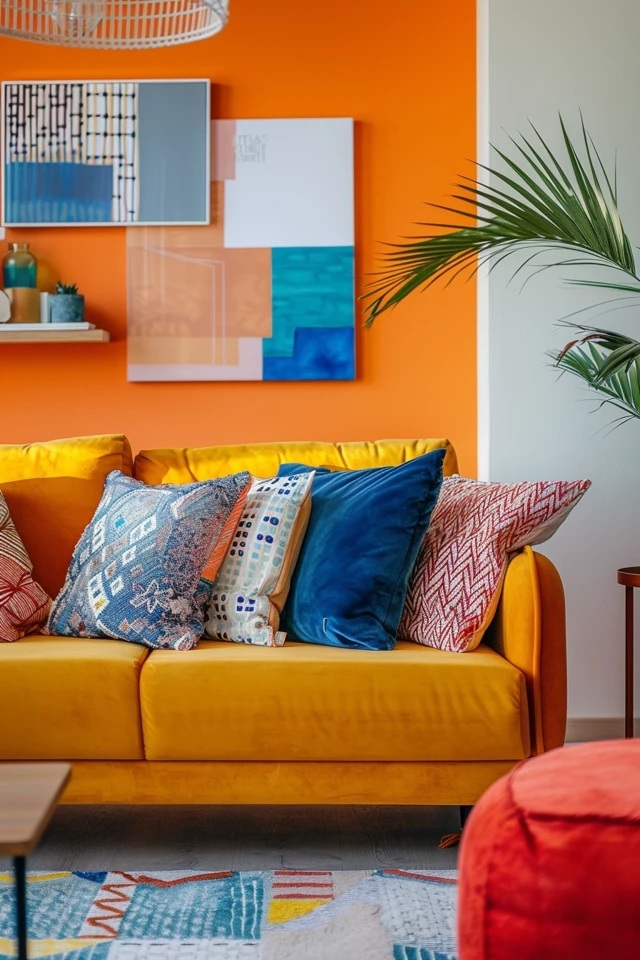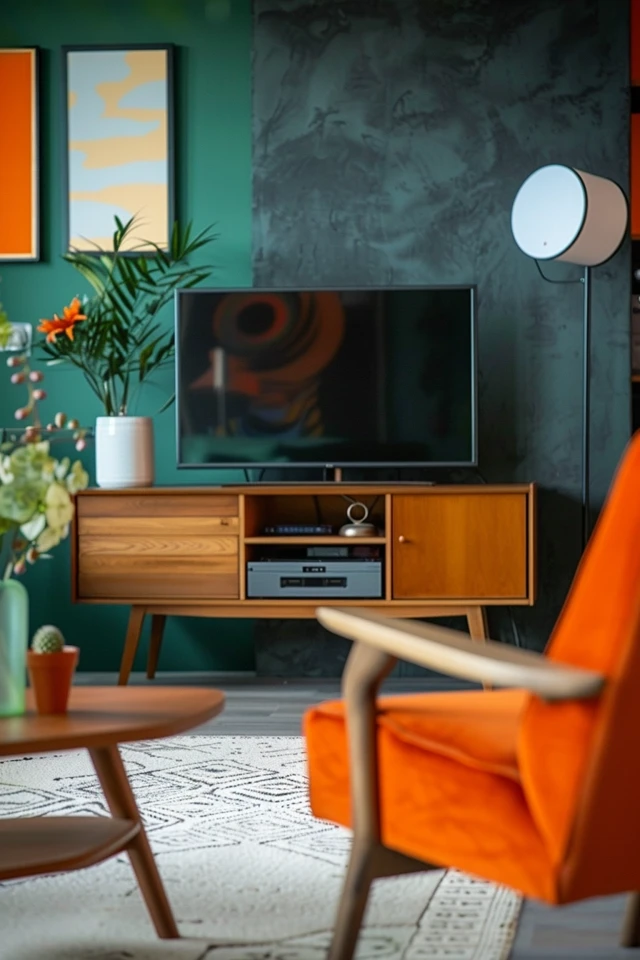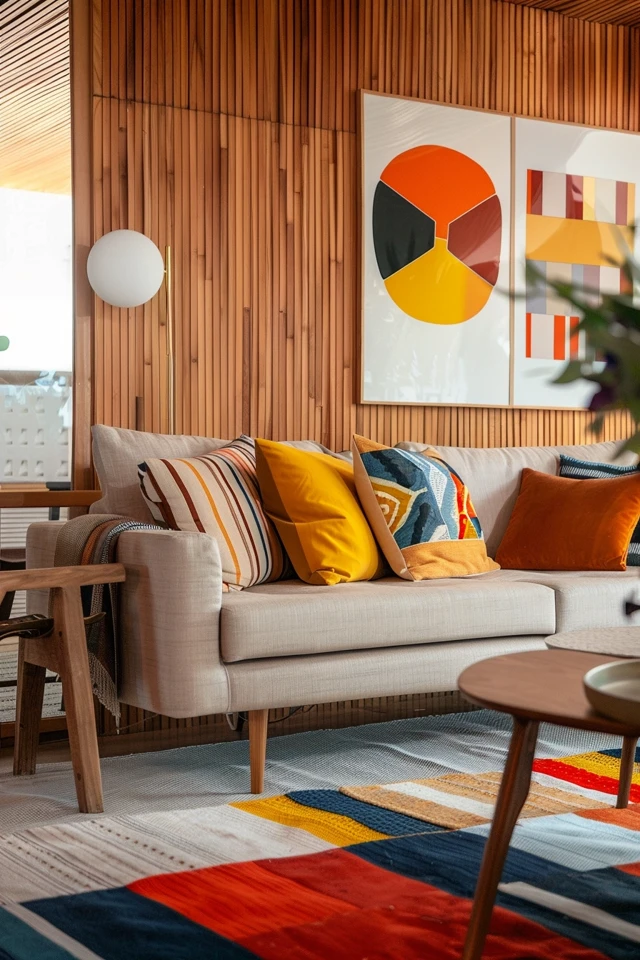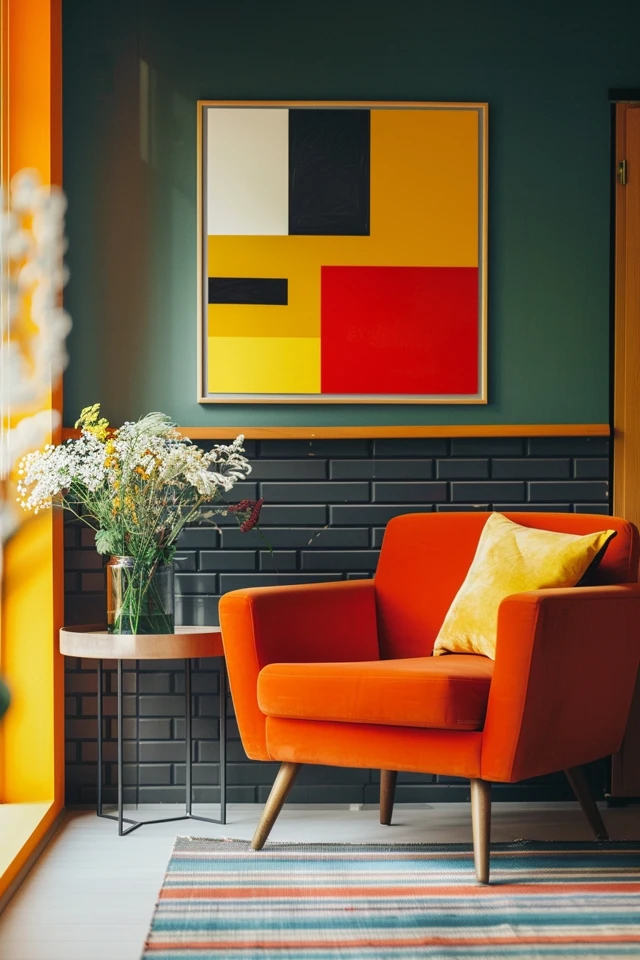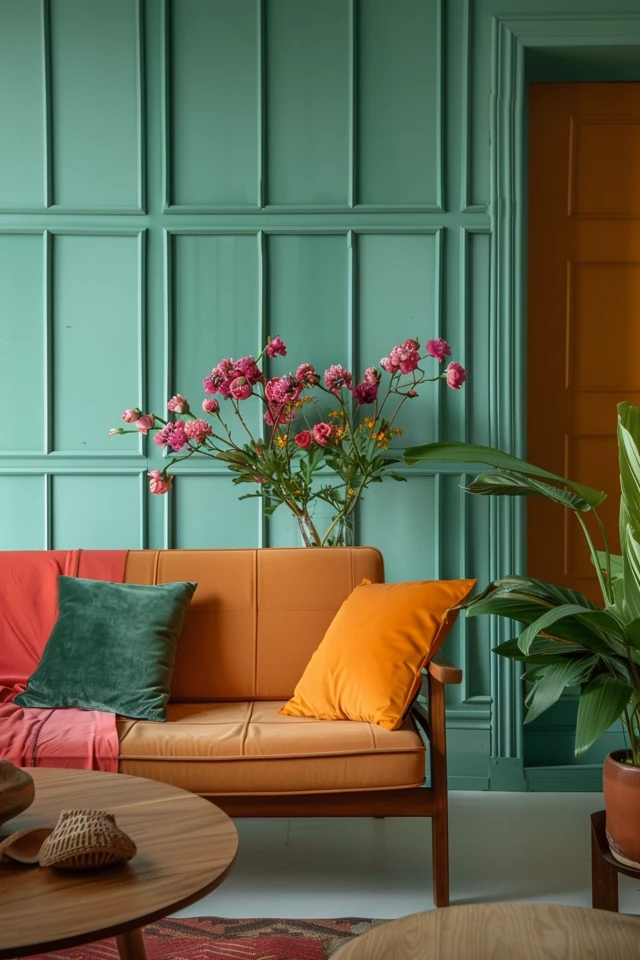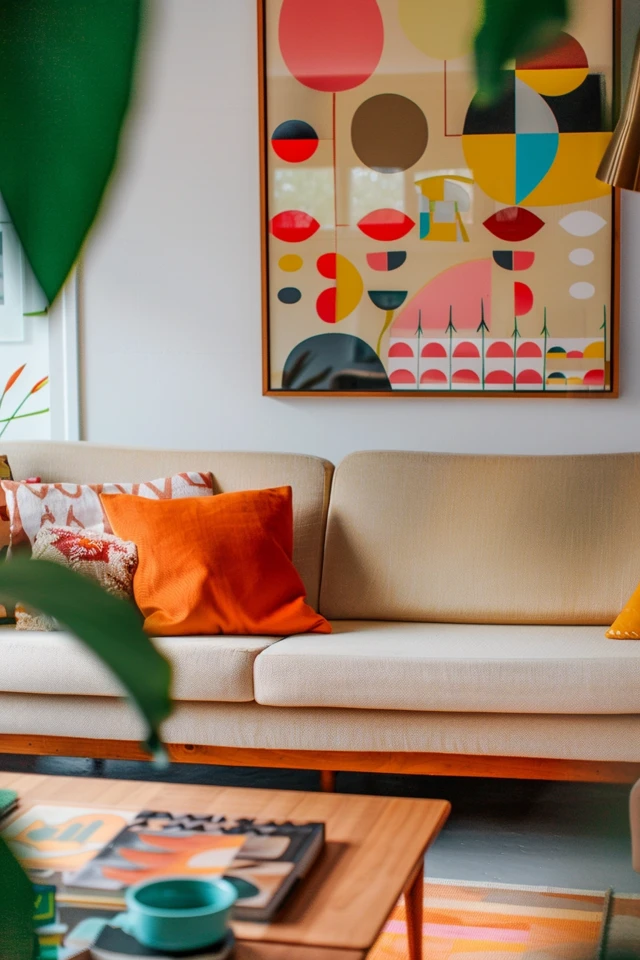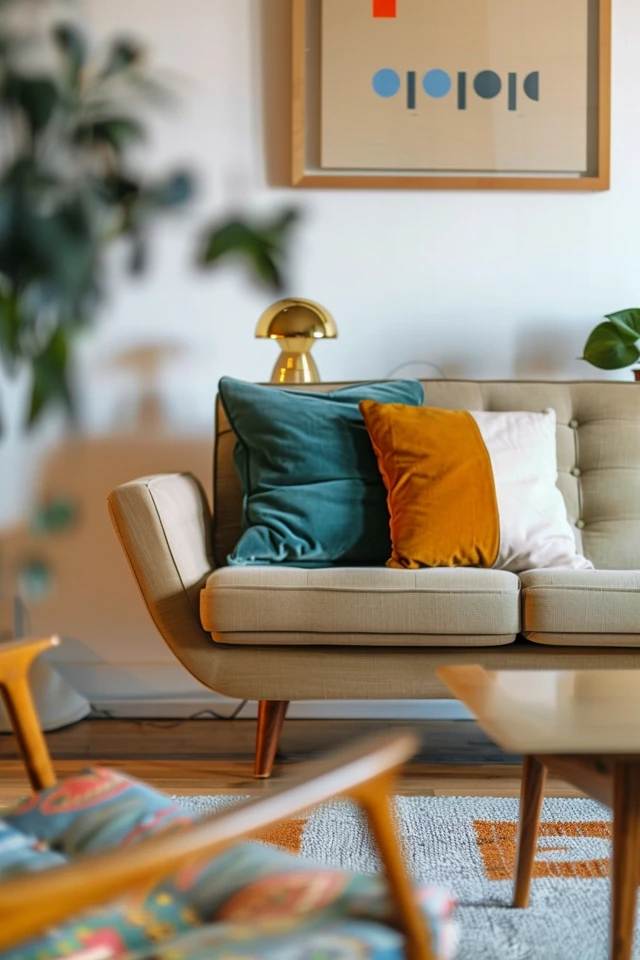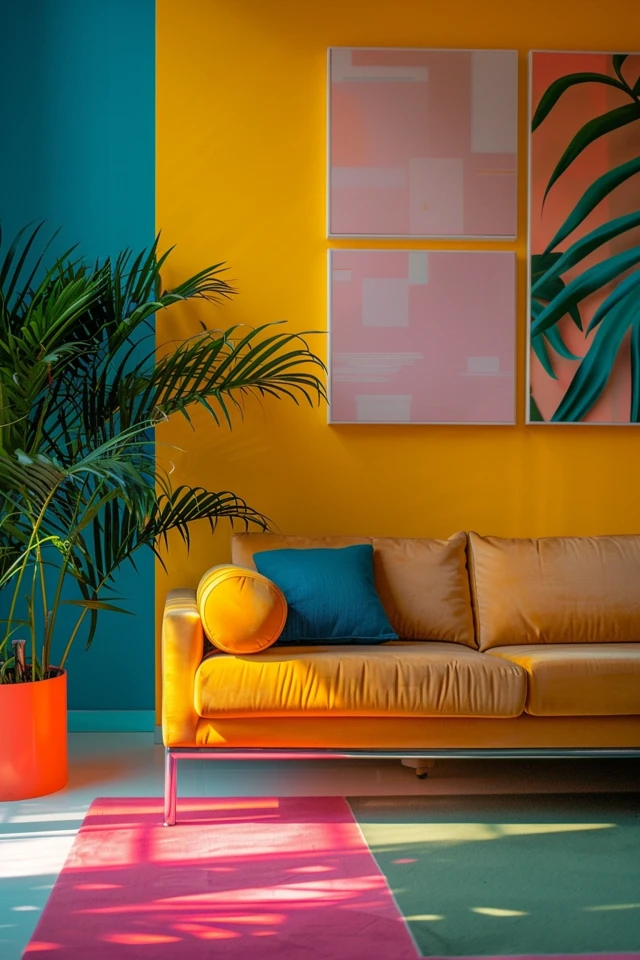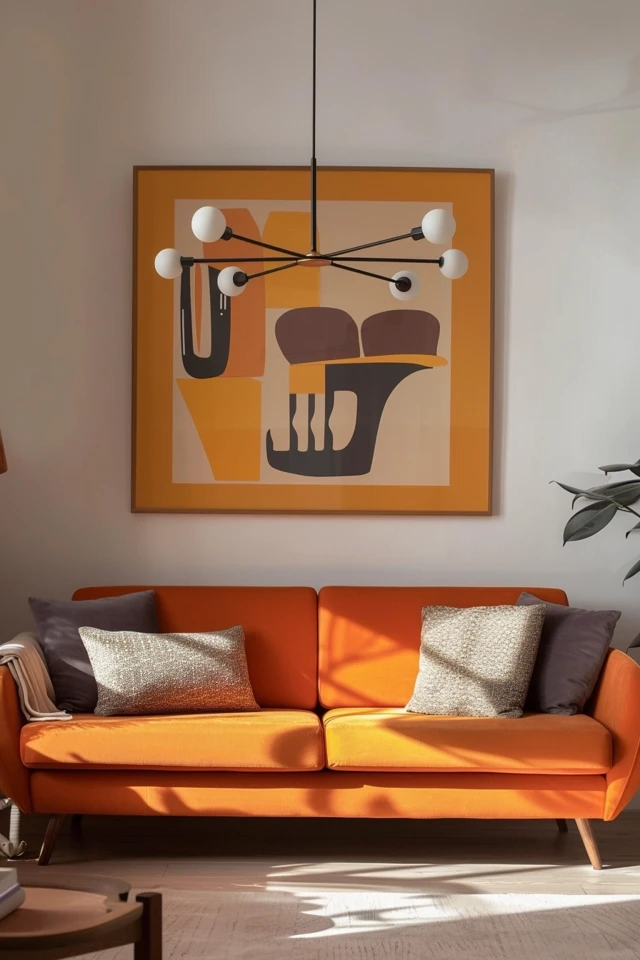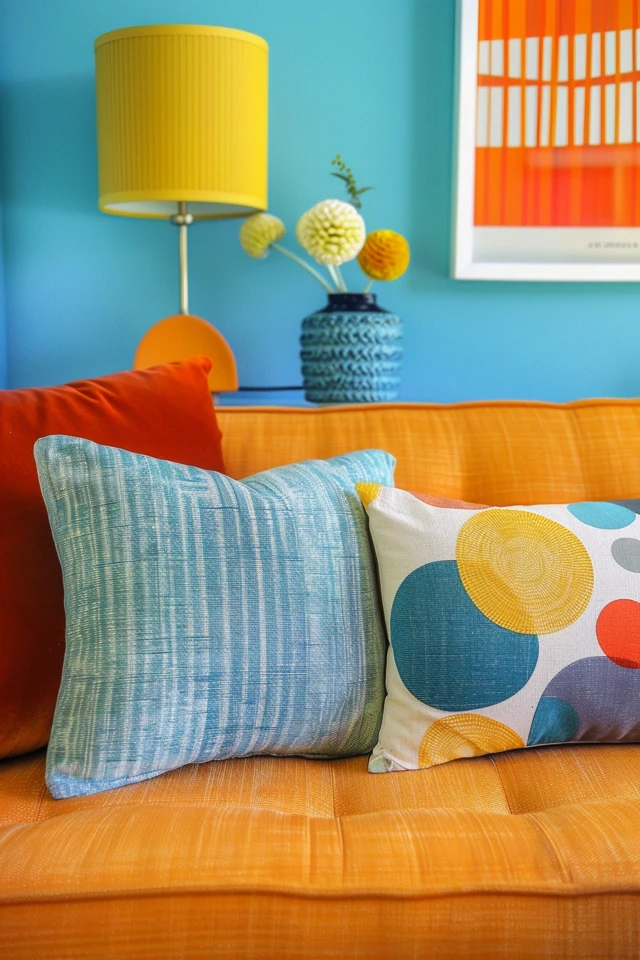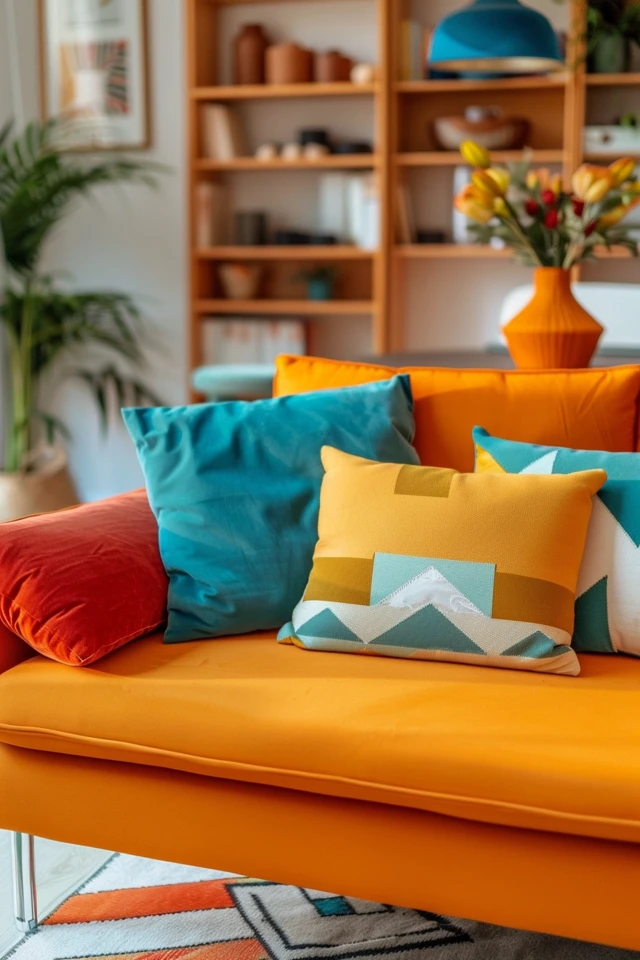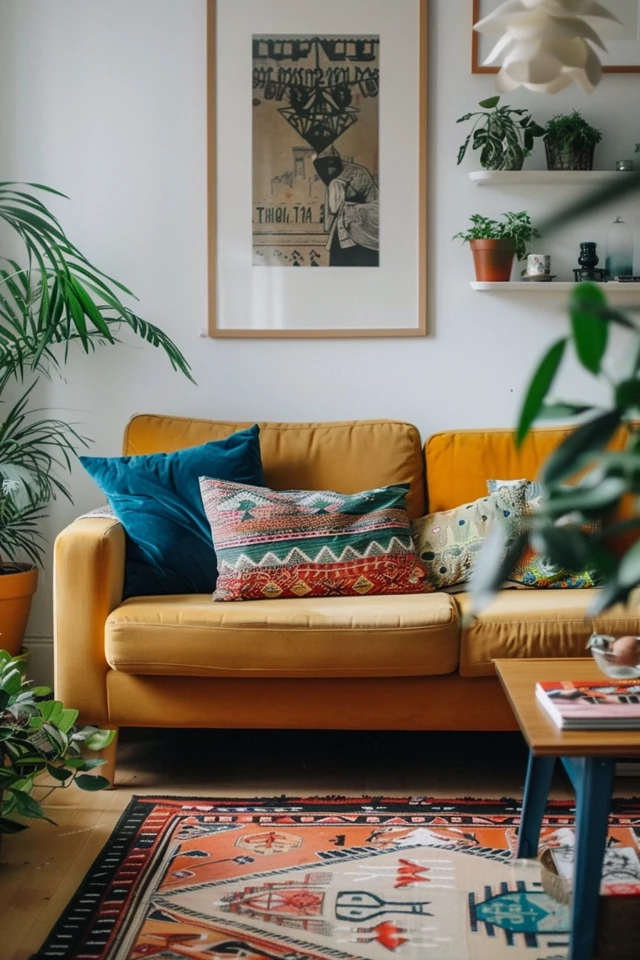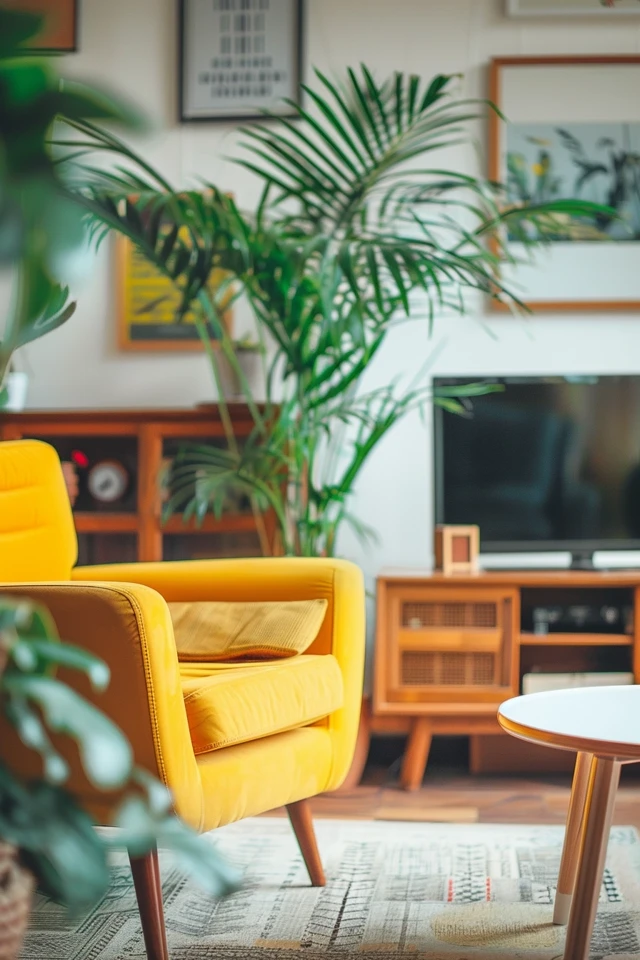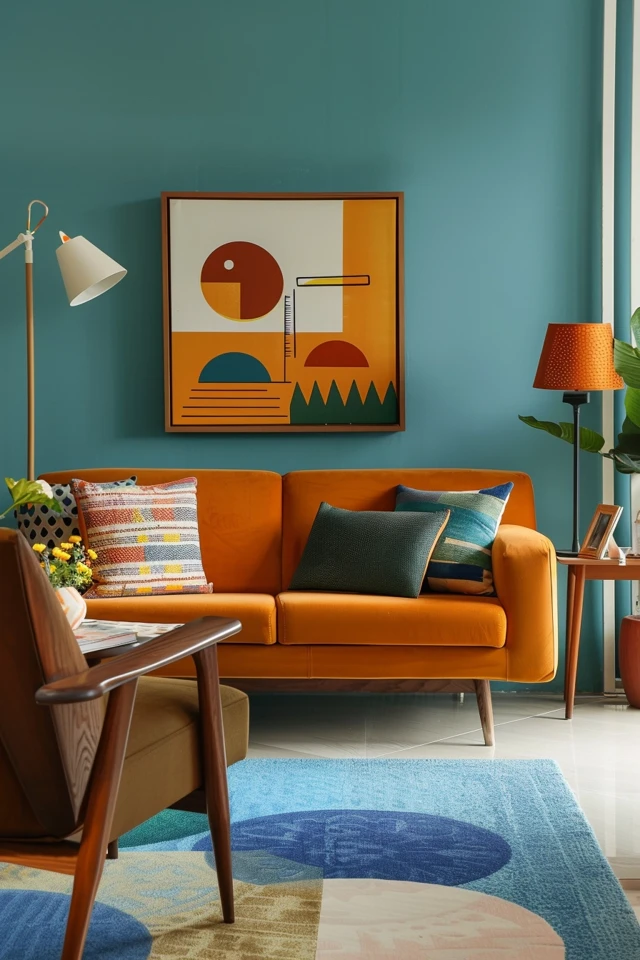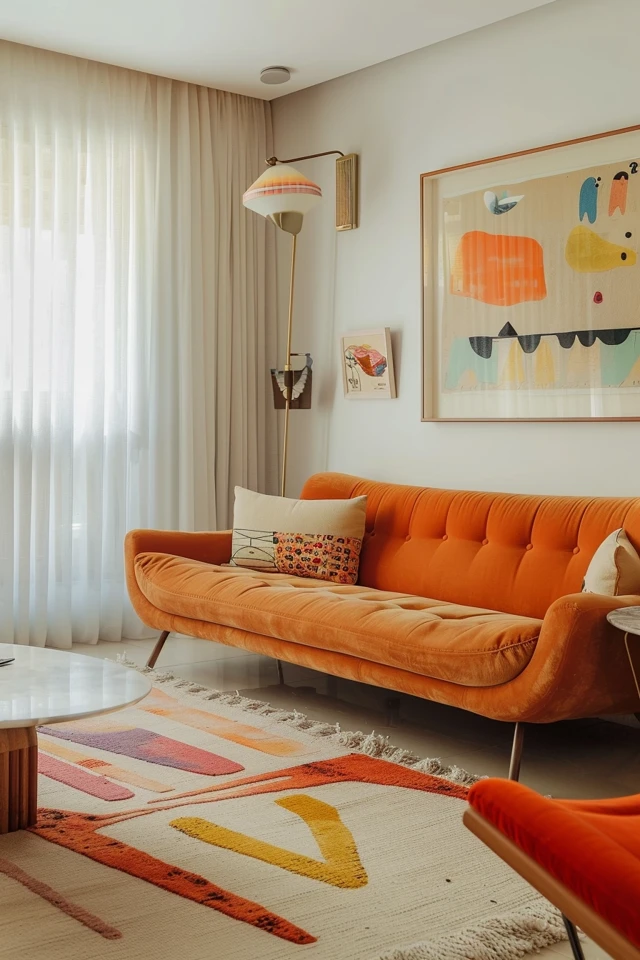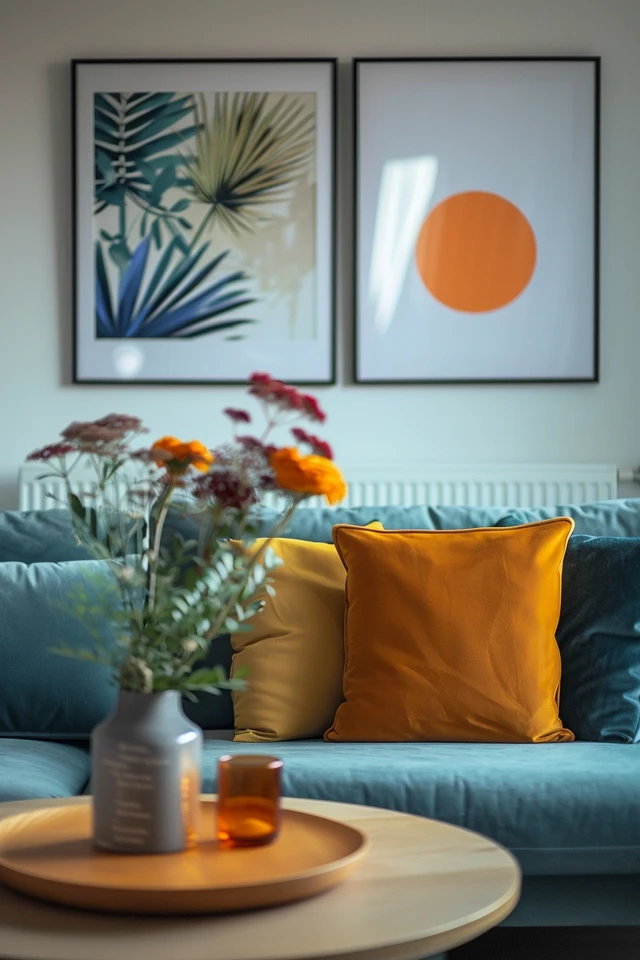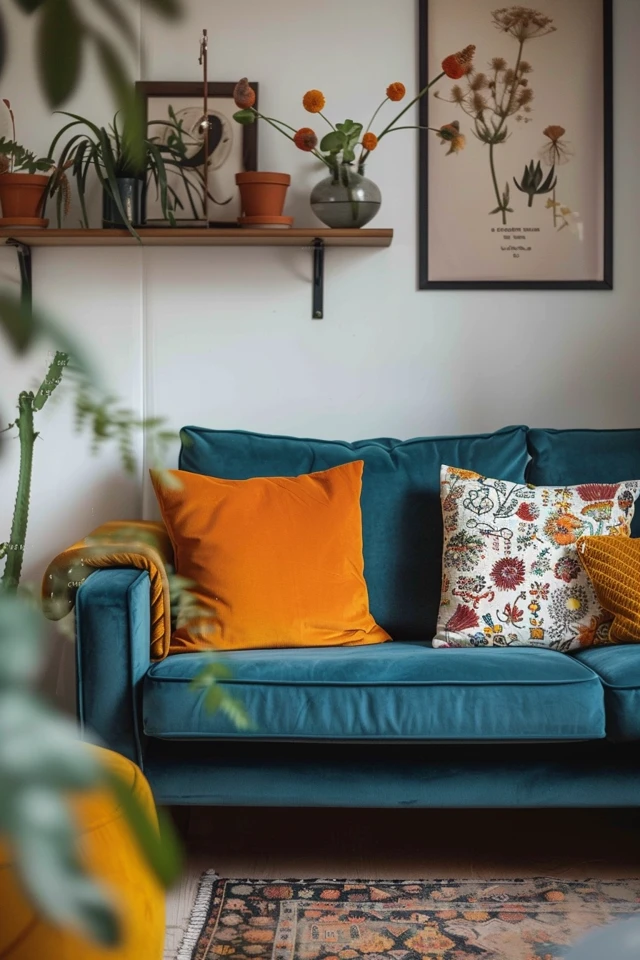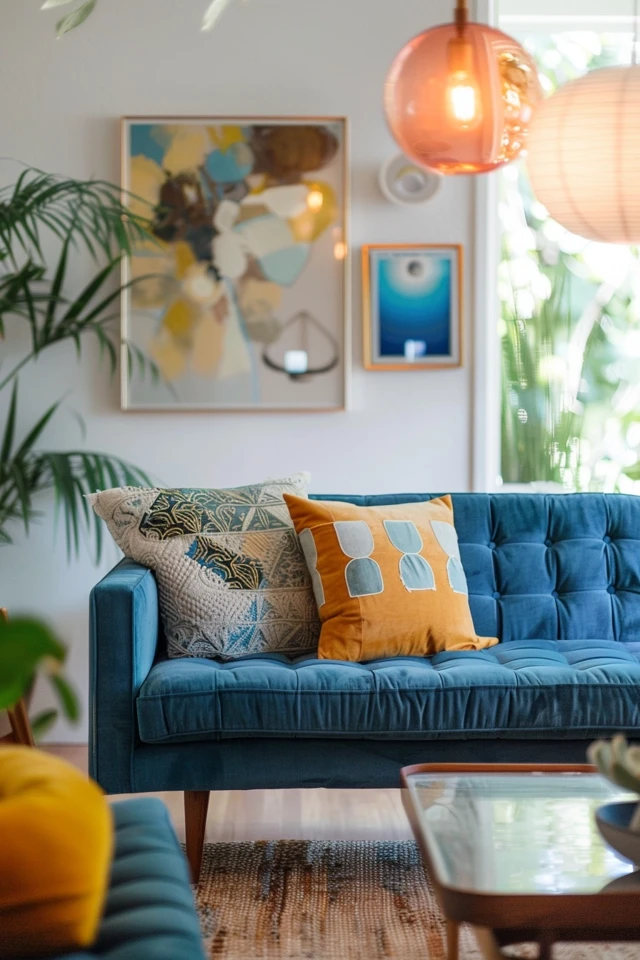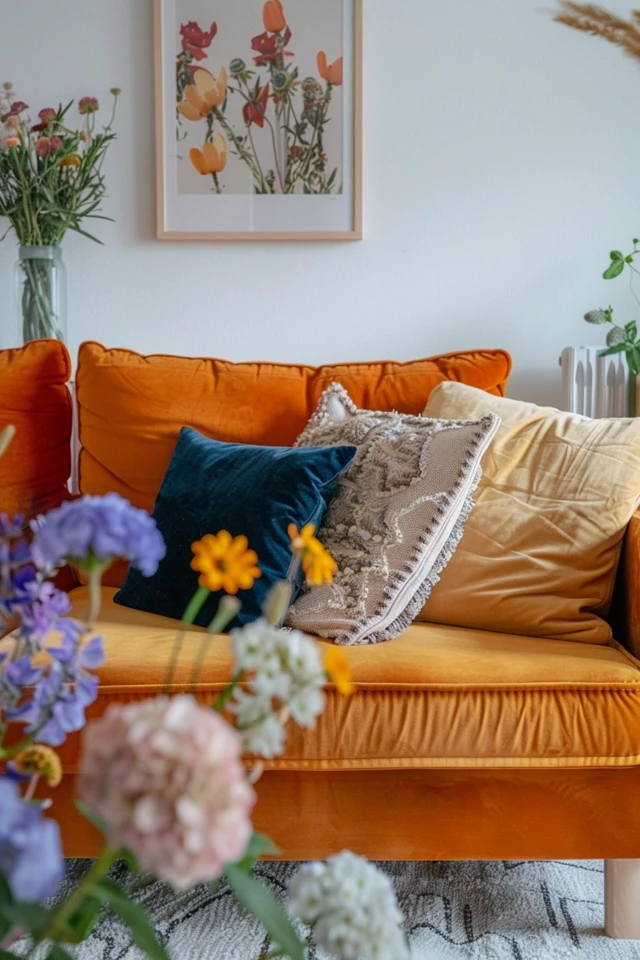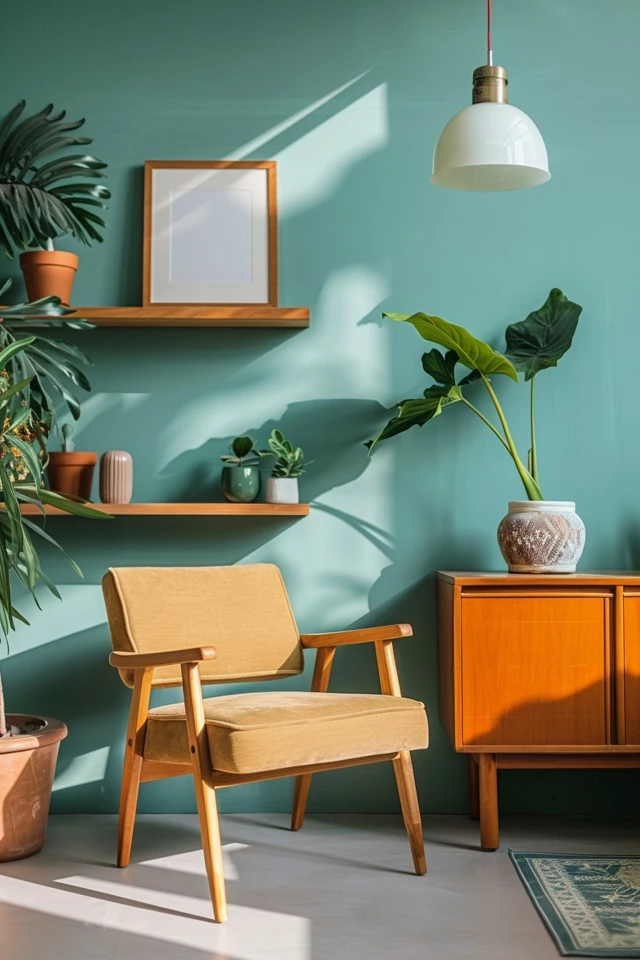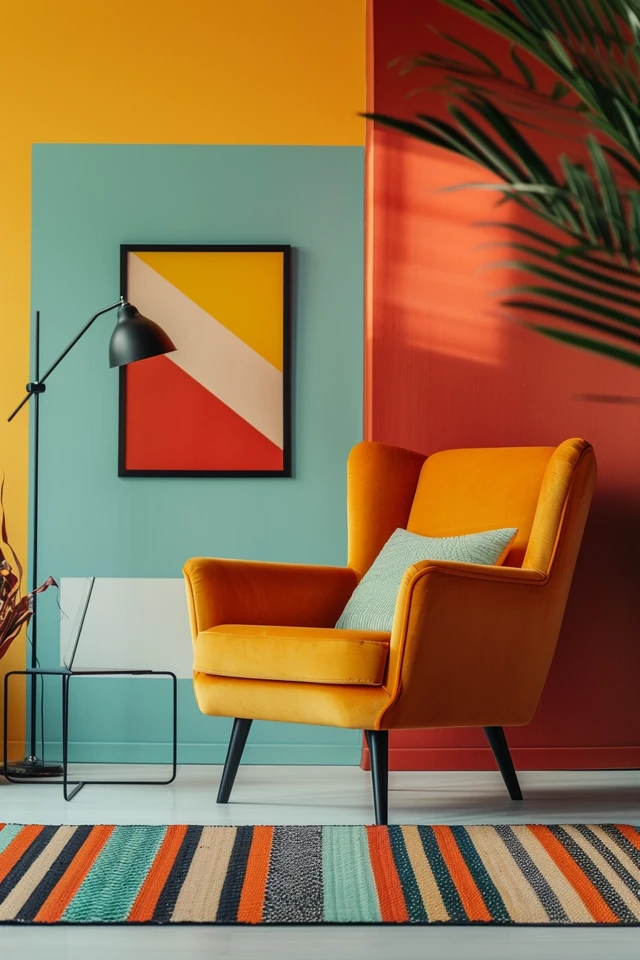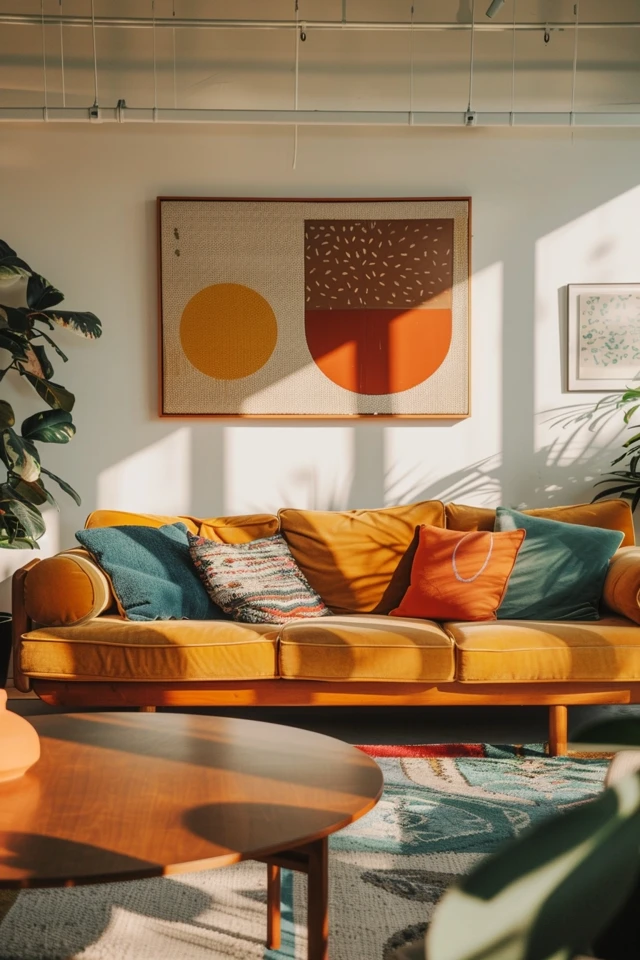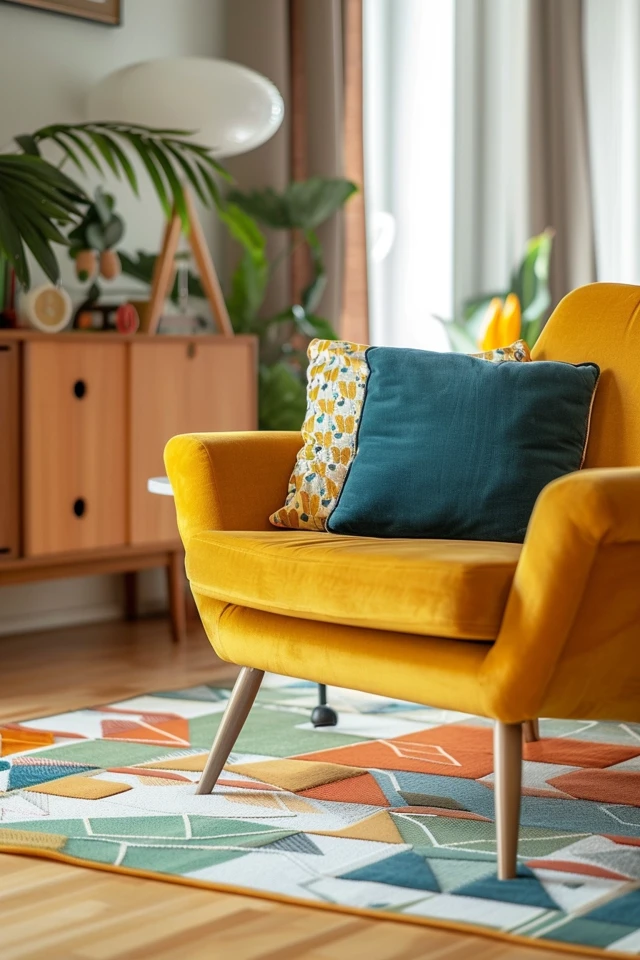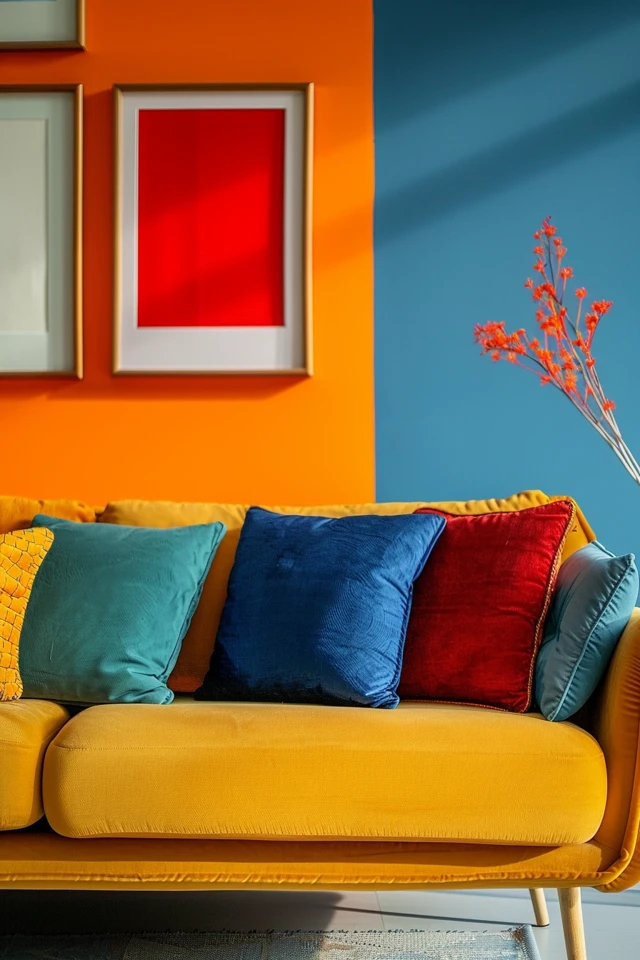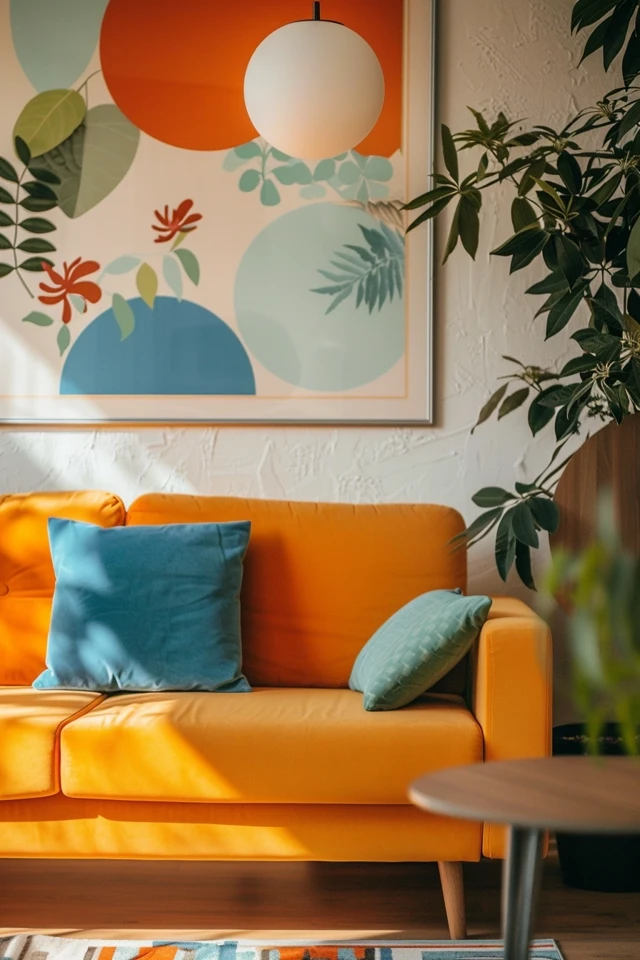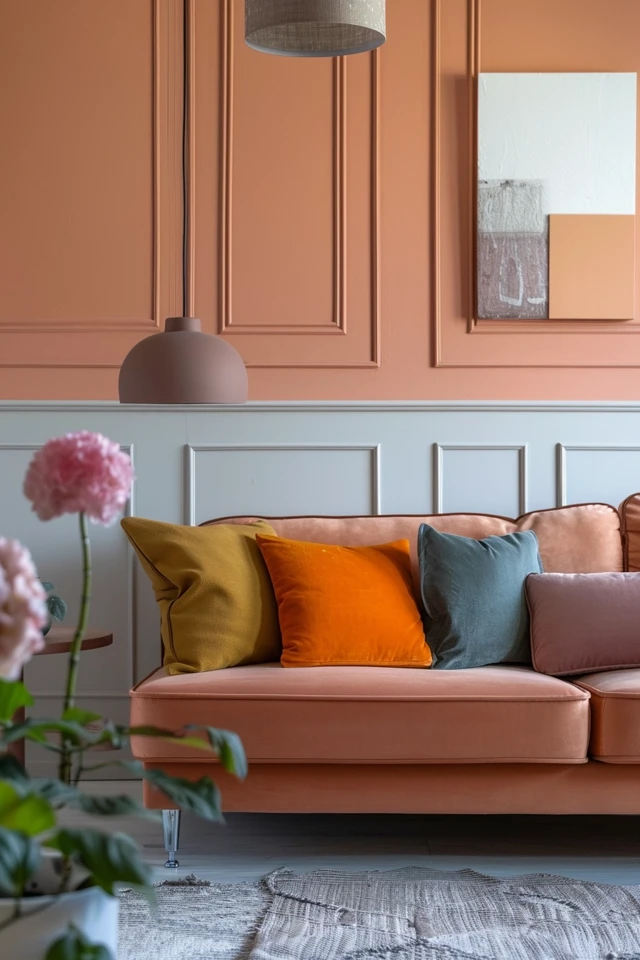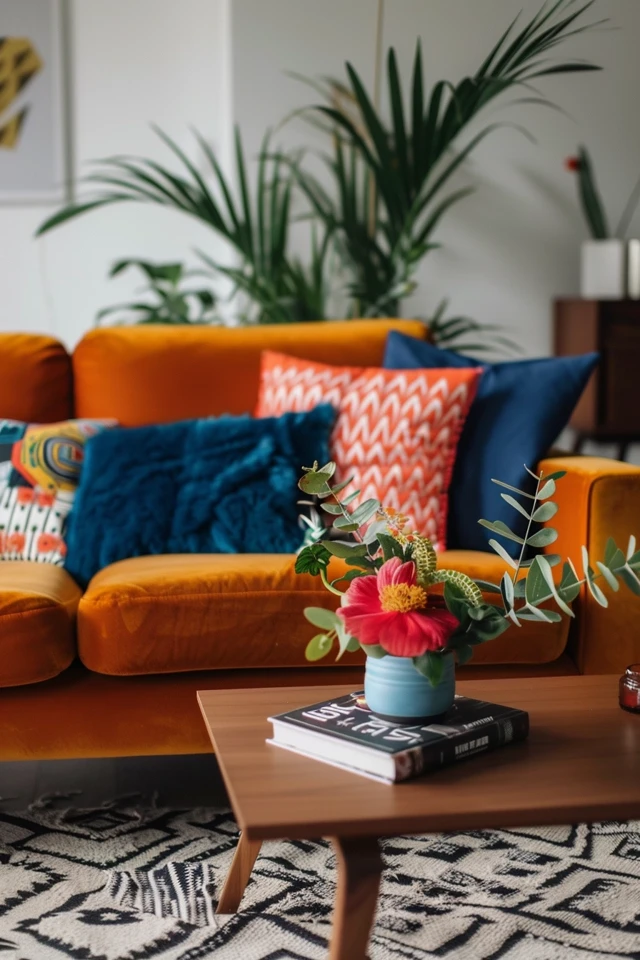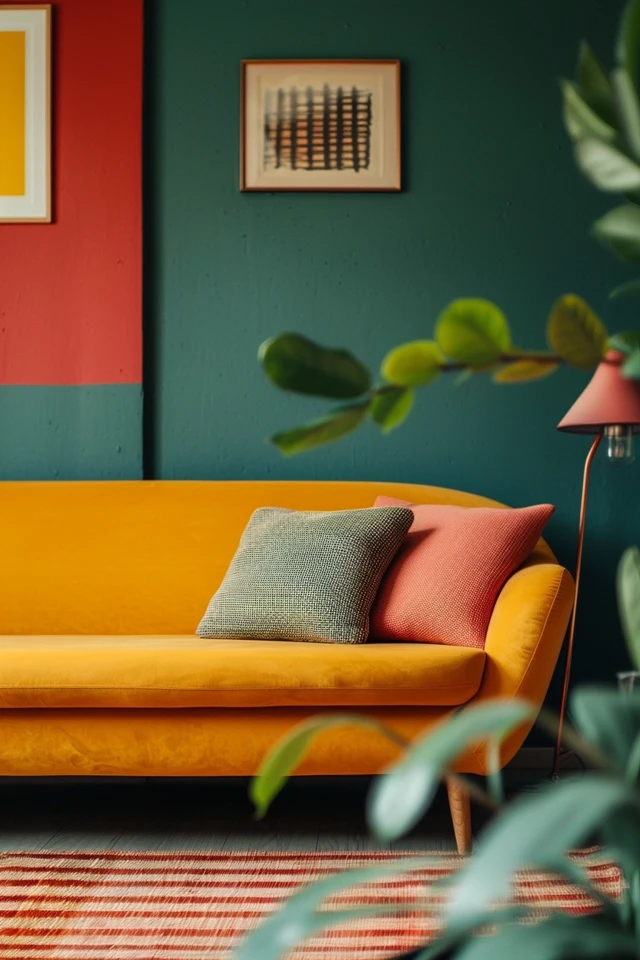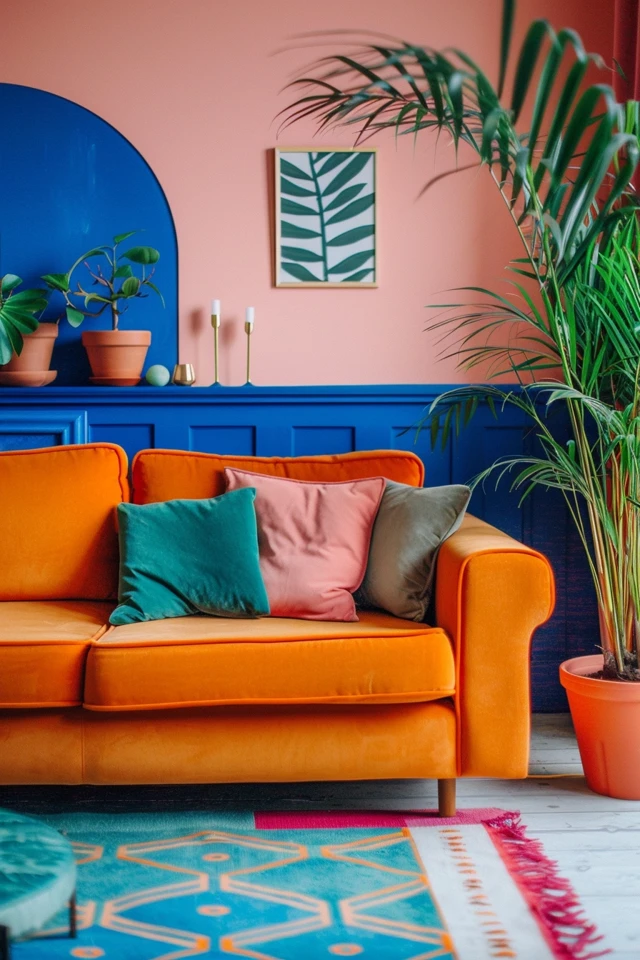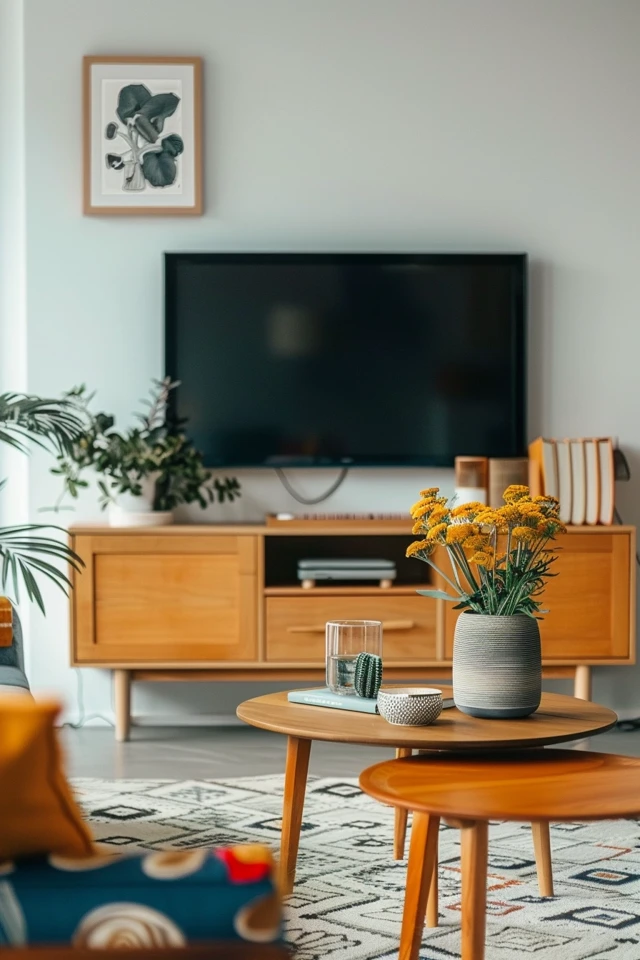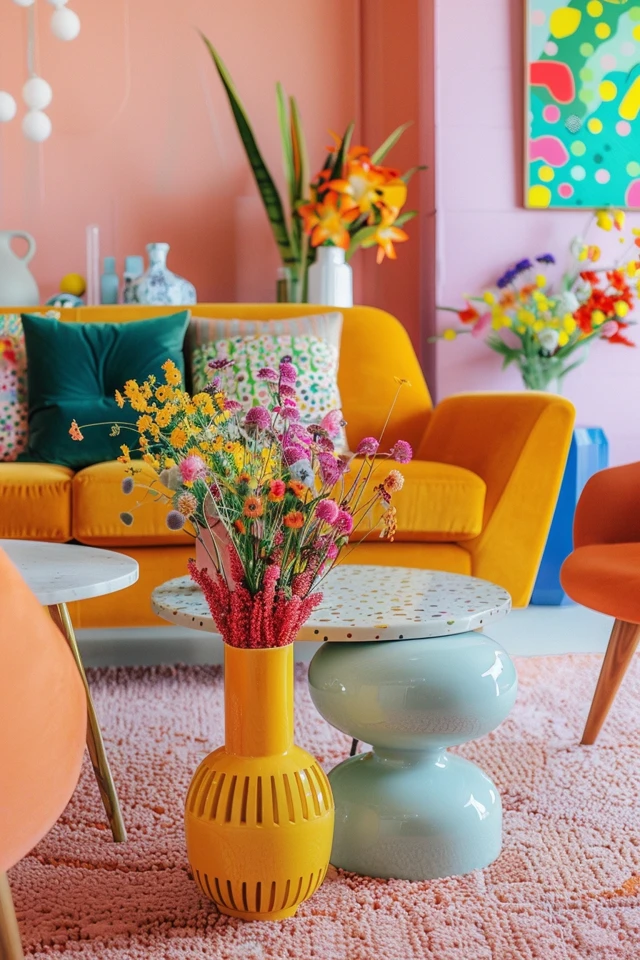Before Reading this Article, Hire Us As Your Designer or Take a Look at My Top 3 Amazon Picks!
If you are looking to blend Amazon's furniture finds with a personalized touch for your space, check out my portfolio, and hire us! You'll get 3 Idea boards, 2 Concept Boards, 2 Realistic Renderings, a Floor Plan, and a Shopping List! Everything's online, plus a 25% discount on your first online interior design project with my Havenly Promo code 4c7441bcfb. With over 2,000 designs since 2017 and top US brand partnerships, your project is in expert hands. US only. Ready to start?
60s Style Living Room Ideas: Groovy and Colorful Designs
Reviving the iconic style of the 1960s in your living room can bring a vibrant and nostalgic touch to your home. The 60s were characterized by bold colors, playful patterns, and an eclectic mix of styles that celebrated individuality and creativity. As an architect and interior designer with expertise in evidence-based design, I’ve seen how integrating 60s elements can transform a space into a lively and inviting area. This guide will explore 60s style living room ideas that will help you create a groovy and colorful design.
The 1960s were a decade of bold experimentation in design, marked by an explosion of color, pattern, and innovative materials. Whether you’re looking to fully embrace the 60s aesthetic or simply add a few retro touches, these ideas will guide you in creating a space that reflects the spirit of the era while maintaining a contemporary feel. From furniture selections to color schemes, we’ll cover various aspects to ensure your living room exudes 60s charm with a modern twist.
Creating a 60s-inspired living room involves more than just adding vintage pieces; it’s about thoughtfully integrating elements that enhance the space and create a cohesive look. By following these principles, you can design a living room that not only looks stylish but also feels comfortable and functional. Let’s dive into the world of 60s style decor and discover how to bring these trends into your modern home.

Key Takeaways:
- Opt for bold color schemes to create a vibrant atmosphere.
- Incorporate iconic 60s furniture for an authentic retro look.
- Use playful patterns to add visual interest and energy.
- Include unique textures to enhance the sensory experience.
- Add nostalgic decor pieces to complete the theme.
1. Opt for Bold Color Schemes to Create a Vibrant Atmosphere
One of the hallmarks of 60s decor is the use of bold and vibrant color schemes. Embrace bright hues to infuse your living room with energy and personality.
Primary Colors: Incorporate primary colors like red, blue, and yellow. These bold hues can be used on accent walls, furniture, and decor items to create a striking visual impact.
Earth Tones: Use earthy tones like orange, avocado green, and mustard yellow. These colors add warmth and a natural feel to the living space.
Black and White: Pair black and white for a classic 60s contrast. This combination can be used in patterns, furniture, and decor to add a modern touch.
Neon Accents: Add pops of neon colors in small doses. Neon signs, tableware, or cushions can bring a playful and retro vibe to the room.
Metallic Finishes: Include metallic finishes in silver, gold, or chrome. Metallic accents on lighting fixtures, furniture, or decor items add a touch of glamour and sophistication.
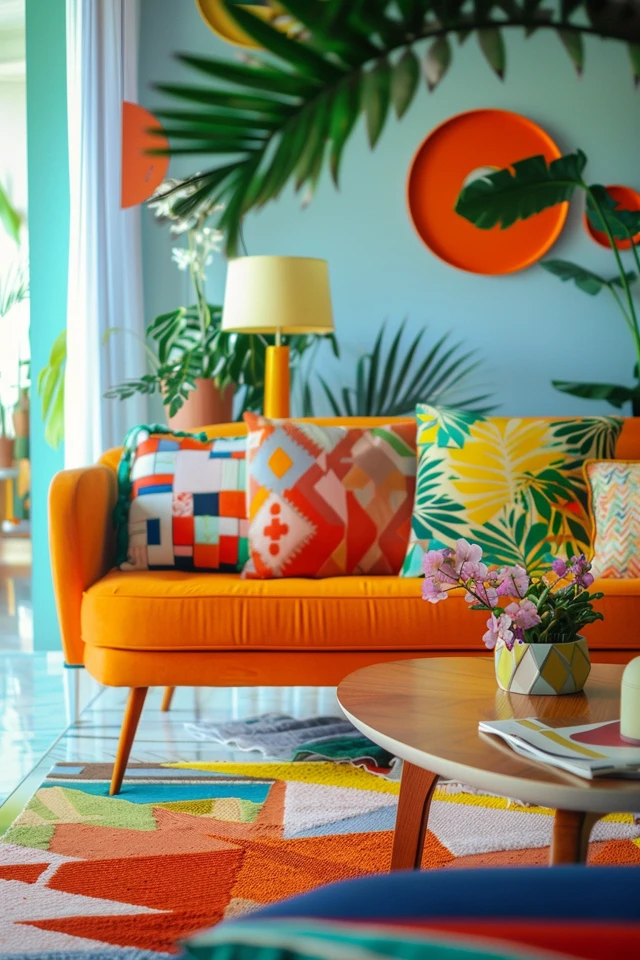
2. Incorporate Iconic 60s Furniture for an Authentic Retro Look
Furniture plays a crucial role in setting the tone for a 60s-inspired living room. Choose pieces that reflect the era’s unique style and functionality.
Modular Sofas: Opt for modular sofas that can be rearranged to suit different layouts. These were popular in the 60s for their versatility and modern look.
Eames Lounge Chair: Incorporate an Eames lounge chair for a touch of mid-century modern elegance. This iconic piece is both stylish and comfortable.
Tulip Table: Use a tulip table with its sleek pedestal base to add a futuristic touch. This design is perfect for coffee tables or side tables.
Retro Lighting: Choose retro lighting fixtures like arc lamps, lava lamps, or globe pendant lights. Lighting with bold shapes and colors can serve as a focal point in the room.
Bean Bag Chairs: Include bean bag chairs for a casual and fun seating option. These were a staple in 60s decor and add a playful element to the space.
3. Use Playful Patterns to Add Visual Interest and Energy
Patterns were a defining feature of 60s decor, adding visual interest and a sense of movement to any space.
Geometric Patterns: Incorporate geometric patterns in wallpaper, rugs, or textiles. These patterns add a dynamic and modern touch to the living room.
Floral Prints: Use floral prints on curtains, cushions, or tablecloths. Floral patterns bring a touch of vintage charm and soften the overall look.
Stripes and Polka Dots: Choose stripes and polka dots for a bold and playful touch. These patterns can be used in upholstery, wallpaper, or decor items.
Psychedelic Designs: Incorporate psychedelic designs with swirling patterns and bright colors. These designs capture the spirit of the 60s and add a groovy vibe to the room.
Chevron and Herringbone: Use chevron and herringbone patterns for a more structured and sophisticated look. These patterns add a retro touch while remaining timeless.
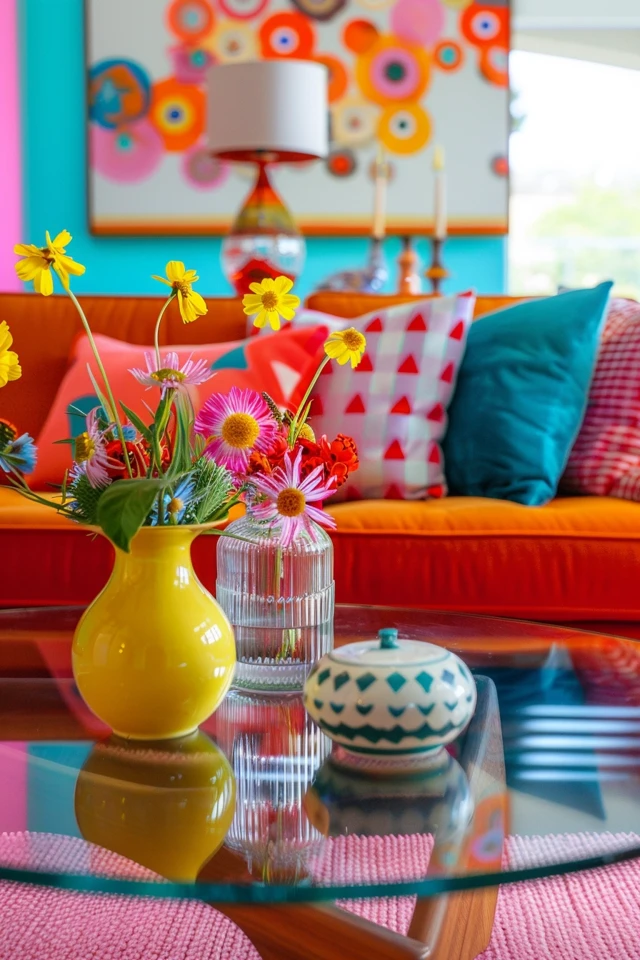
4. Include Unique Textures to Enhance the Sensory Experience
Textures add depth and interest to a room, making it feel more inviting and dynamic. The 60s were known for their use of a variety of textures in home decor.
Velvet Upholstery: Choose furniture upholstered in velvet for a luxurious and tactile feel. Velvet adds richness and warmth to the space.
Shag Rugs: Incorporate shag rugs for a touch of retro charm. These rugs are soft underfoot and add a cozy element to the room.
Mirrored Surfaces: Use mirrored surfaces on walls, furniture, and decor items to reflect light and create the illusion of more space. Mirrors were a popular decorative element in the 60s.
Lucite and Acrylic: Include Lucite and acrylic furniture for a modern and transparent look. These materials add a futuristic touch and are reminiscent of 60s design.
Textured Wallpaper: Opt for textured wallpaper with metallic finishes or embossed patterns. This adds depth and visual interest to the walls.
5. Add Nostalgic Decor Pieces to Complete the Theme
To fully embrace the 60s aesthetic, incorporate nostalgic decor pieces that evoke the era’s iconic style and culture.
Vintage Posters: Display vintage posters or artwork featuring 60s pop culture references. This can be a fun and nostalgic addition to the living room.
Retro Tableware: Use retro tableware like colorful plates, glasses, and utensils. Vintage table settings can add a playful and eclectic touch to your dining experience.
Record Players: Include a vintage record player and display your favorite vinyl records. This not only adds a retro vibe but also provides entertainment.
Houseplants: Incorporate houseplants like ferns, spider plants, or pothos. Plants were a popular decor element in the 60s and add a fresh and natural feel to the space.
Collectibles: Display 60s collectibles like toys, memorabilia, or gadgets. These items add personality and a sense of history to the room.
Conclusion
Transforming your living room with 60s style decor involves more than just adding a few retro pieces. It’s about thoughtfully integrating elements that enhance the space and create a cohesive look. By opting for bold color schemes, incorporating iconic 60s furniture, using playful patterns, including unique textures, and adding nostalgic decor pieces, you can create a living room that captures the essence of the 1960s while maintaining a contemporary feel.
As an architect and interior designer, I believe that thoughtful design can significantly improve your quality of life. The 60s style decor offers a perfect blend of boldness and creativity, making it an ideal choice for those looking to add a touch of nostalgia and vibrancy to their home. Whether you’re starting from scratch or updating your current space, these ideas will help you achieve a dynamic and stylish look that is both timeless and modern.
Remember, the key to successful 60s-inspired decor is to make it your own. By incorporating your personal style and preferences, you can create a living room that not only looks great but also feels uniquely yours. Happy decorating!
Inspirational Pictures
